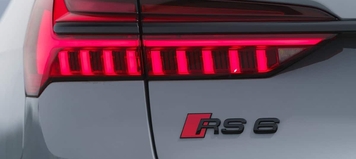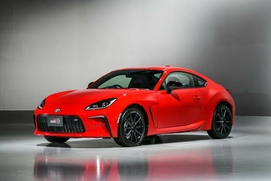-20% on the entire catalog today
Free shipping starting from $18
- Back to home
- You are here : Blog News Lotus Emeya: The Transition to a Clean and Ecological Electric Sedan
Lotus Emeya: The Transition to a Clean and Ecological Electric Sedan
Published by The team in News the 30/08/2023 at 15:02

In the ever-changing landscape of the automotive sector, Lotus, under the able leadership of Geely, is unveiling ambitious new plans to expand its range and move away from its “brand for purists” image. The Type 133 model, which was previously referred to as an E-segment electric sedan, is now given the official name Lotus Emeya. The move is part of Lotus' strategy to make it a serious competitor to brands such as Porsche, while positioning itself as an expert in the field of clean and eco-friendly electric sports cars, thereby contributing to the reduction of CO2 emissions. and pollutants.
Diversification of the Range towards Rechargeable and Ecological Models
Lotus began its transformation by introducing several innovative projects, marking a deviation from its traditional heritage. Among these projects, we find:
- Eletre (Type 132) : An E-segment electric SUV, already released in 2023, powered by an advanced electric motor and offering an all-electric driving experience. This plug-in model is part of Lotus' green vehicle strategy.
- Emeya (Type 133) : An E-segment electric sedan, aiming to compete with the Porsche Taycan, planned for 2024. This new electric powertrain promises impressive all-electric performance, helping to reduce pollutants and CO2 emissions. This plug-in sedan fits perfectly into Lotus' own electric vehicle model.
- Project 134 : A D-segment electric SUV, planned to compete with the Porsche Macan, with an expected release in 2025. The use of lithium-ion in the battery illustrates the commitment to more environmentally friendly solutions and zero -emission.
Introducing the Lotus Emeya and the Benefits of Eco-friendly Cars
The Lotus Emeya, also known as the Type 133, represents a major turning point for the brand. Scheduled to be officially unveiled on September 7, it breaks with tradition by adopting a modern and avant-garde design. Notable elements of its appearance include a two-tier lighting signature at the front, a continuous light strip at the rear and an active spoiler.
Technical Characteristics and Contribution to a Clean Future
The Lotus Emeya is based on the same platform as the Eletre, using either the name Electric Premium Architecture (EPA) or SEA-S (Sport Electric Architecture) due to its link to Geely's other platforms. This electric sedan should benefit from advanced technologies, particularly in terms of chassis, driving assistance, active aerodynamics and propulsion. We can expect impressive performance, with power up to 675 kW (905 hp) and a 112 kWh battery, capable of long all-electric journeys thanks to its fast charging capability.
The transition to electric vehicles is marked by a significant increase in registrations of models such as the Lotus Emeya. As the electricity grid expands to meet growing needs, purchasing an electric vehicle, like the Lotus Emeya, is becoming increasingly attractive thanks to the benefits of plug-in and eco-friendly models. This transition is reinforced by initiatives such as conversion bonuses, encouraging the switch to electric cars and cleaner vehicle models.
In this evolving context, Lotus Emeya embodies the fusion of innovation, electric performance, sustainability and contribution to a clean, green world, reflecting the changing aspirations of drivers and advancements in the automotive sector. towards a cleaner and more environmentally friendly future.
The Autonomy of the Electric Car and the Commitment to Ecology
One of the major features of electric cars, including the Lotus Emeya, is their increasing range. Advances in technology have extended the distance traveled on a single charge, making these all-electric models increasingly suitable for everyday needs as well as highway journeys. This increased autonomy reinforces the attractiveness of electric vehicles and their viability as ecological alternatives to thermal vehicles.
The transition to fully electric vehicle models also aligns with green initiatives. Electric cars, compared to thermal vehicles, emit considerably less CO2 and air pollutants. This reduction in emissions has a positive impact on air quality and public health, helping to create cleaner, more liveable cities.
Economic and Environmental Benefits of Eco-Friendly Cars
The purchase of electric vehicles is also encouraged by economic incentives, such as conversion bonuses and tax reductions. These financial benefits reinforce the decision to opt for eco-friendly cars, while contributing to the growth of the clean vehicle market. Plug-in models, like the Lotus Emeya, take advantage of these incentives while still offering exceptional performance and a modern driving experience.
The increasing electrification of the automotive sector is paving the way for a more sustainable and environmentally friendly future. The combined benefits of electric cars, clean vehicles and plug-in models help reduce carbon footprint, improve air quality and support the transition to greener mobility.
In this context in full transformation, the Lotus Emeya embodies the evolution towards fully electric vehicles and the commitment to cleaner and more responsible mobility. It places itself at the heart of this revolution, marking a crucial shift towards high-performance ecological cars, and thus helping to shape a more sustainable future for the automotive sector and the planet.
Post a comment
Order safely
Quick delivery
By your side 7 days a week !
14 days to change your mind
Subscribe to the newsletter




